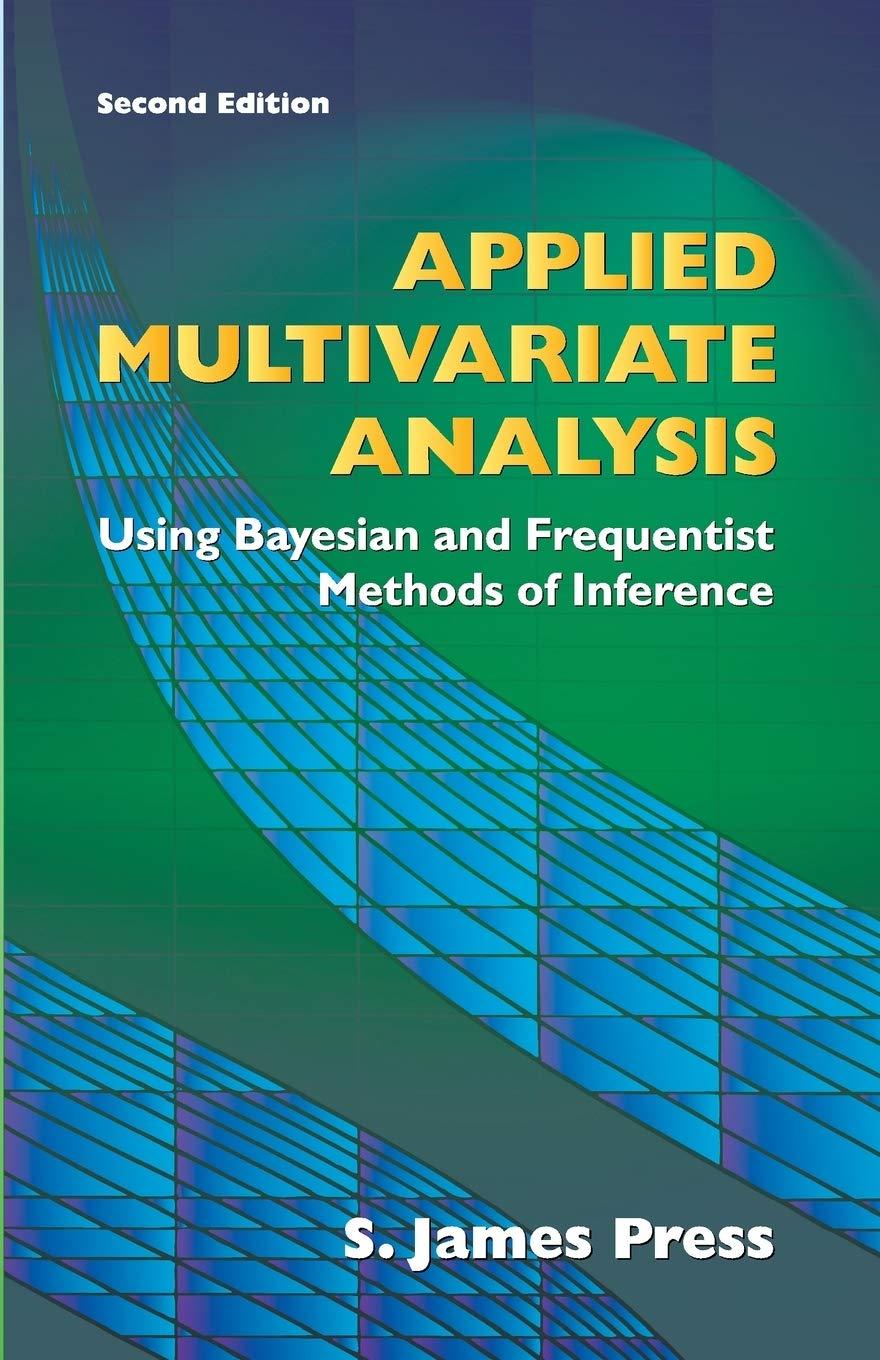8.14 Suppose x1, . . . ,xN are independent bivariate vectors denoting changes in verbal and quantitative
Question:
8.14 Suppose x1, . . . ,xN are independent bivariate vectors denoting changes in verbal and quantitative scores on achievement tests for people in a job training center who take the pair of tests before a training program, and then again after the training program. Suppose for j = 1, . . . , N, = N (θ, ). In another such training program involving 300 trainees it was estimated that θ = θ0 ≡ (25,30)’, = 0 ≡ . Moreover, verbal score changes were found to vary from 0 to 50 and quantitative score changes varied from 20 to 40. Verbal score changes were predictable about half the time from quantitative score changes. Use this information on the other training program to assess a generalized natural conjugate prior for θ and Σ (make some “reasonable” assumptions). Then show that the posterior distribution of θ given the sample data is proportional to the product of a Normal density and a multivariate Student t-density centered at the sample mean. [Hint (1): Ranges of variables might represent, say, plus or minus three standard deviations, so, for example,
3{var(θ1)}½ = 25; predictability might be interpreted as a correlation, so that Cor(θ1,θ2) = 0.5; you might also take E(E) = Σ0. Other interpretations might include order statistics, or other descriptive statistics.] [Hint (2): Use the likelihood function of Section 7.1.6 and the prior density in (8.6.16), and eliminate Σ.]
Step by Step Answer:







